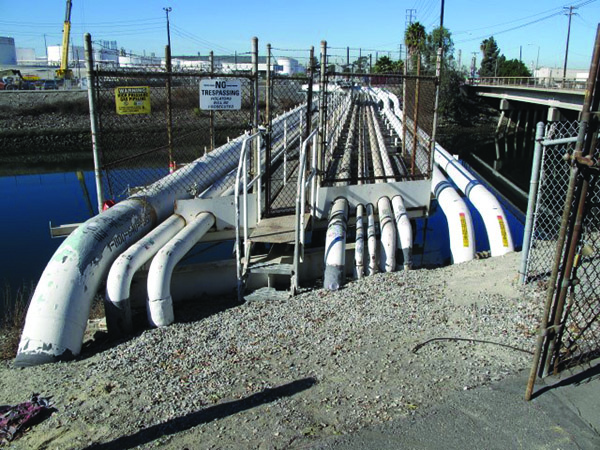PODS Releases New Data Model System with ILI Module for Pipeline Operators
(P&GJ) — The Pipeline Open Data Standard (PODS) Association has announced the release of its PODS 7.0.2 data model and standard with ILI module. The inclusion of ILI sensors helps create more data that is needed for alignment to the pipeline centerline and pipeline girth welds in order to perform corrosion growth, anomaly analysis, and other pipeline integrity management operations and procedures.
The Pipeline Open Data Standard (PODS) data model provides the database architecture pipeline operators need to submit regulatory reports, store critical information, analyze pipeline systems data, and manage geospatial data in a linear-referenced database which can be visualized in any GIS platform.
The PODS Pipeline Data Model houses the attribute, asset information, construction, inspection, integrity management, regulatory compliance, risk analysis, history, and operational data that pipeline companies have deemed mission-critical to successfully managing natural gas, hazardous liquids, renewables and water pipelines.
PODS 7.0.2 is structured to handle the amount of data that ILI inspections generate for the life of pipe. ILI runs can contain 500,000+ records and operators may have 200+ runs/re-issues a year. With ILI becoming a preferred inspection and assessment methodology by regulatory agencies for pipeline integrity management, PODS members (operators, GIS experts, ILI vendors and integrity managers) worked together to understand and design a solution to effectively manage this data.
Operators must have transparency to their assets in the field and in real-time. The PODS data model brings an optimized performance to members for business functionality, decision making and risk management by supporting the entire asset lifecycle in new and established programs. Referencing and integrating all data (including now all ILI data) within a spatial context can help to provide pipeline operators with a definitive view or digital twin of their pipeline and systems for optimized asset knowledge management.
The benefits of the PODS model include database architecture for a linear-referenced database, which was designed and maintained by Industry Subject Matter Experts (SMEs) and thought leaders to be the system of record for pipeline centerlines and pressurized containment assets for the safe transport of product.
It standardizes and modernizes data management and reporting, enabling system integration with business systems and asset knowledge management tools enterprise wide via service-oriented approaches so any experienced vendor can assist or support operators with migrating, implementing, modeling or maintaining their system.
Additionally, it includes a pipe-centric approach to managing pipeline data in a single data repository. This feature houses all mission-critical data for any pipeline system — natural gas, hazardous liquids, water and renewables such as hydrogen and carbon sequestration.
The PODS database helps pipeline owners collect, verify, manage, analyze, update, maintain, and deliver all information about their pipelines quickly and reliably to applications and end-users.
Pipeline changes, such as re-routes, change of service, asset transfer or sale, abandonment, removal, repair, and replacement are all managed within the PODS database as data records linked to the pipeline.
As a community, PODS is made up of thought leaders and innovators who share knowledge and expertise to build and maintain the only geospatial data model specifically designed by and for pipeline operators. Focusing on pipeline safety, single-system-of-record for pipeline asset locations and specifications, regulatory and integrity management, and inspection and repair analysis, our model has been implemented by over 200 pipeline operators in 36 countries, representing over 3 million miles of linear pipeline assets and systems including facilities, storage, stations, etc. over the last 25 years.
Related News
Related News

- Enbridge Plans 86-Mile Pipeline Expansion, Bringing 850 Workers to Northern B.C.
- Intensity, Rainbow Energy to Build 344-Mile Gas Pipeline Across North Dakota
- Energy Transfer to Build $5.3 Billion Permian Gas Pipeline to Supply Southwest
- Enbridge Sees High Demand to Expand 593-Mile Canada-to-U.S. Gulf Oil Pipeline
- Strike Pioneers First-of-Its-Kind Pipe-in-Pipe Installation on Gulf Coast with Enbridge
- A Systematic Approach To Ensuring Pipeline Integrity
- 275-Mile Texas-to-Oklahoma Gas Pipeline Enters Open Season
- LNG Canada Start-Up Fails to Lift Gas Prices Amid Supply Glut
- Strike Pioneers First-of-Its-Kind Pipe-in-Pipe Installation on Gulf Coast with Enbridge
- Enbridge Sees High Demand to Expand 593-Mile Canada-to-U.S. Gulf Oil Pipeline





Comments